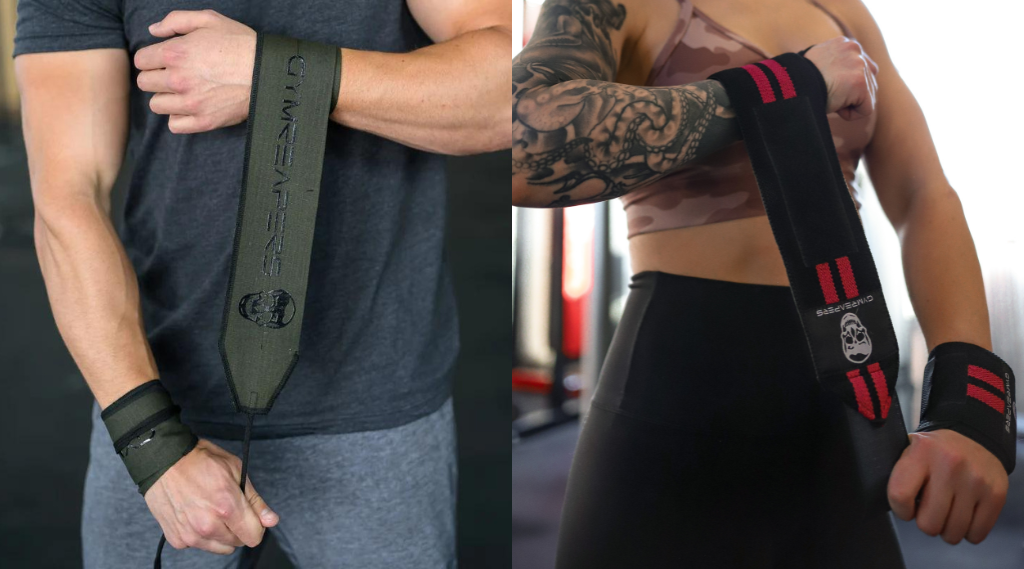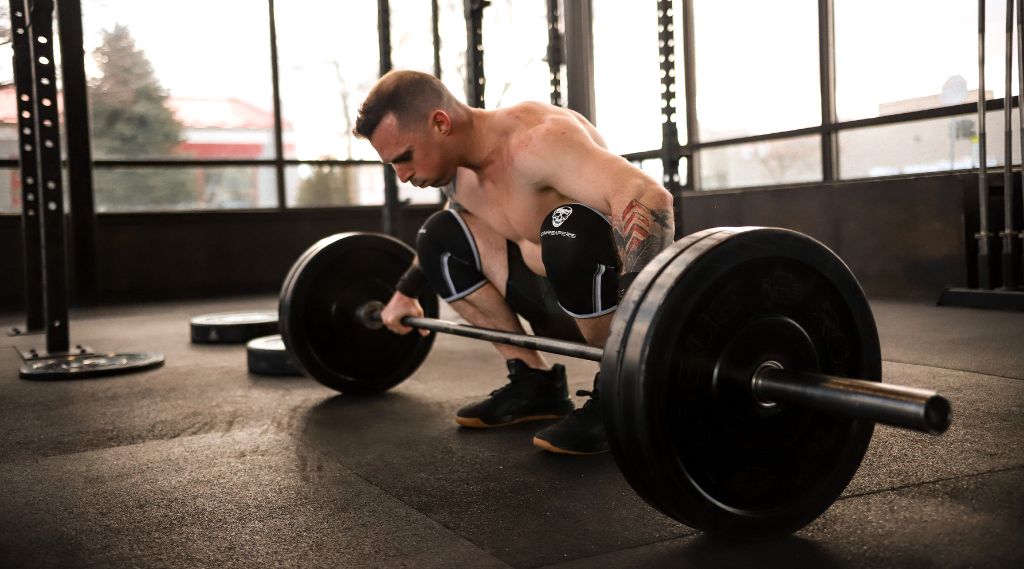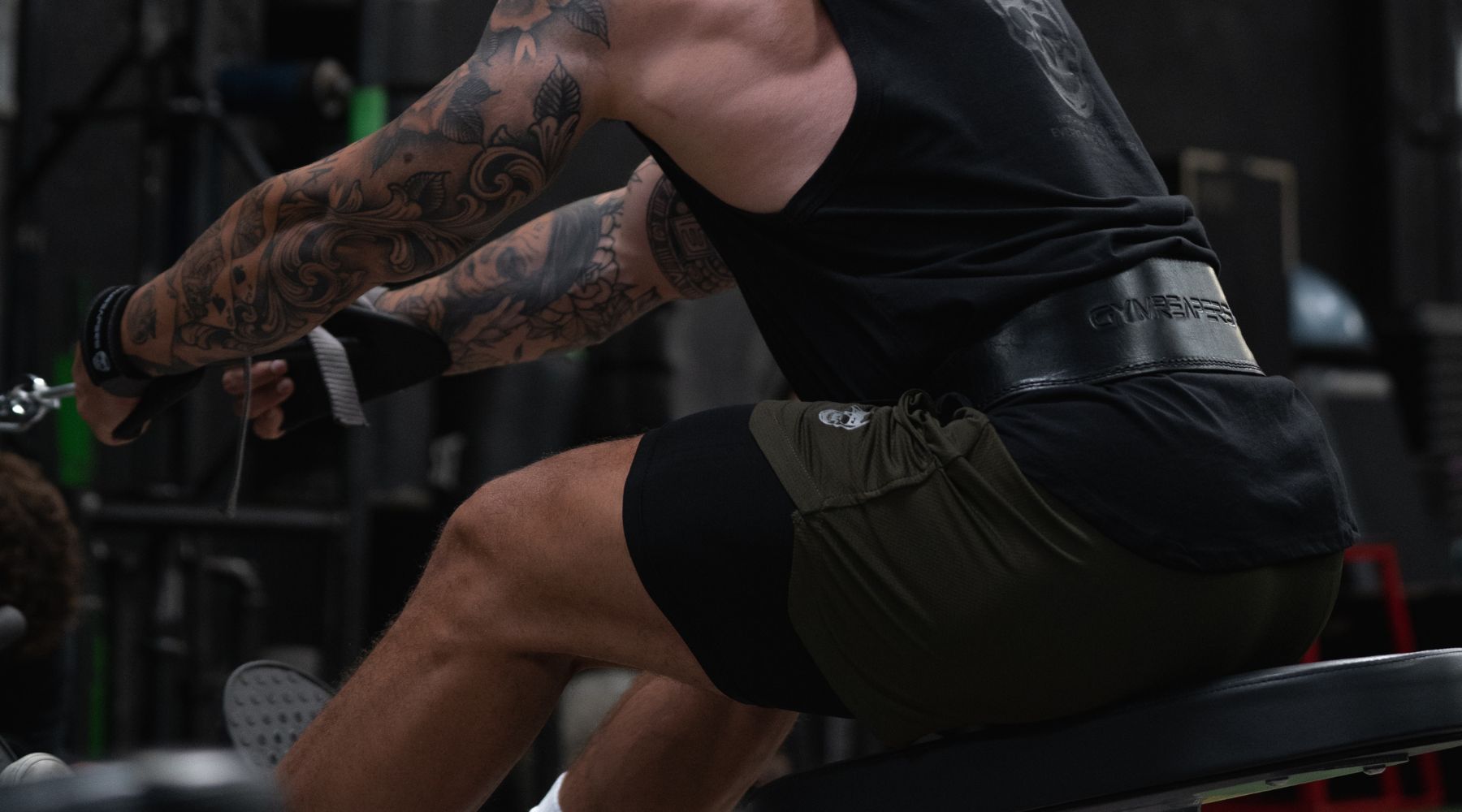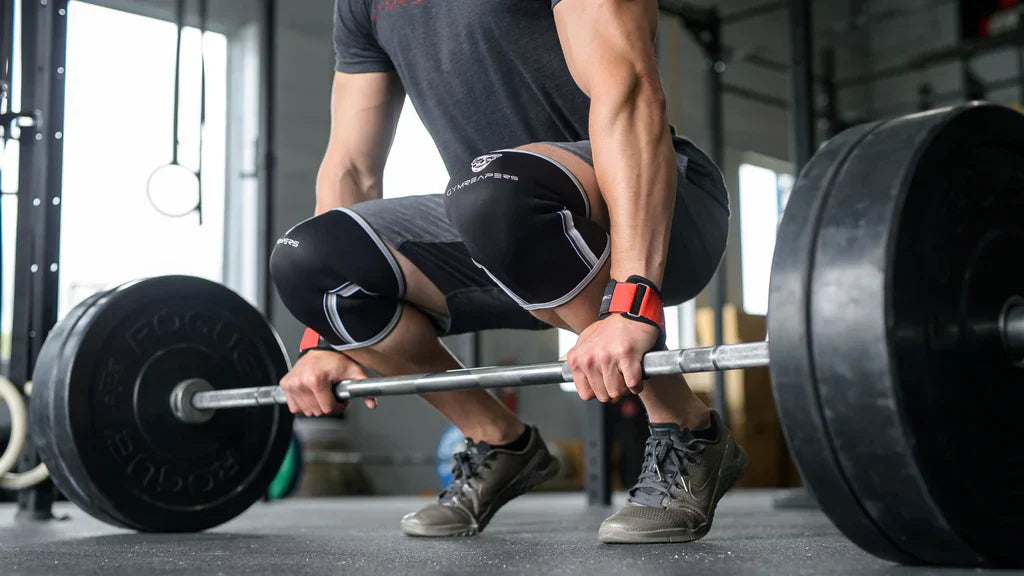As a personal trainer with more than eight years of experience, I’ve learned that different types of lifters have unique needs when it comes to training equipment, which fully applies to wrist wraps.
The wraps you get for Olympic lifting should be light and flexible enough to keep your wrists mobile yet stable to reduce the risk of injuries. A good wrist wrap length is between 16 and 20”, with a width of 3”. Wraps made of elastic and polyester provide excellent wrist support without feeling heavy or stiff.
With that said, Olympic weightlifting is a highly technical sport. There are several things to consider when purchasing wrist wraps and determining when to use them to protect yourself from injuries.
Key Takeaways
- Movements like the clean and snatch rely on wrist mobility, which means you shouldn’t automatically get the stiffest wrist wraps. Maximum support might not be ideal for Olympic weightlifting.
- As per IWF rules, wrist wraps are allowed in competition, and there is no length or width limit. The materials typically used include gauze, neoprene, and leather, but elastic and polyester are also allowed.
- Unlike powerlifting, where maximum support allows for a tight and controlled lift, Olympic weightlifting is more fluid. Lifters should be more mindful of several things to determine when to use wrist wraps and when not to.
Why Wrist Wraps Are Important For Olympic Lifting

Wrist wraps can be a valuable addition to your gym bag if you enjoy Olympic weightlifting. Wraps provide joint support and prevent excessive wrist bending during vigorous activities and when transitioning from one phase of a lift to the next.
Unlike traditional bodybuilding training, Olympic weightlifting is a highly dynamic and technical sport that relies heavily on timing and power.
Take the clean and jerk as an example. The movement begins with a powerful pull off the floor, with athletes transitioning into a front rack position before concluding with a forceful press overhead.
The wrists can bend excessively at almost any point, especially when a lifter receives the bar in the front rack position. Over time, that stress can lead to nagging wrist aches that could become chronic if left untreated.
Similarly, thrusting the barbell into an overhead position can lead to wrist extension, causing issues.
The snatch is similar in many ways. It also begins with a forceful pull off the bottom position, and trainees’ wrists can bend excessively during the transition or when the barbell is overhead.
Two crucial differences between snatches and cleans are:
- The snatch is done with a wider grip, which can further affect wrist stability, and possibly even lead to ulnar wrist pain
- During a snatch, lifters must generate even more momentum off the bottom position to thrust the bar directly overhead
Wearing the correct wraps would limit wrist flexion and extension, allowing lifters to perform well without putting their wrists at risk.
What to Look For In Wrist Wraps For Olympic Lifting

Length
Due to the dynamic nature of Olympic weightlifting, some trainees think longer wrist wraps would be of more help. After all, the longer they are, the more times they loop over the wrists, providing greater stability.
The problem is that support comes at the expense of wrist mobility, affecting your ability to perform certain exercises.
Moderate support from 12”, 16”, or 18” wrist wraps will be enough for most lifters. For instance, females with smaller wrists can go with 12” wraps, whereas men with thicker wrists and those handling more weight should go with 18-20” wraps.
Width
Wrist wraps generally range from 1 to 3” in width. Narrower wraps aren’t helpful for Olympic lifting because they don’t have the width to cover the base of the hand and wrist joint.
Three inches will be the ideal width for Olympic weightlifters.
Material
The two common types of wrist wraps are those made of cotton and the ones consisting of an elastic and polyester blend.
Cotton wrist wraps are flexible, thin, and more comfortable but don’t offer as much wrist support. These would primarily work for lighter training, where you don’t need as much help to maintain straight wrists.
In contrast, wrist wraps consisting of elastic and polyester are slightly more rigid and allow trainees to tighten them extra hard if they need more support. You can immobilize your wrists and keep them straight, even when using weights close to your 1RM.
However, you should be careful of how tightly you wrap these around your wrists, as too much rigidity can impair your ability to perform highly technical lifts.
Aside from the regular wraps, you can also find heavy-duty ones. These typically consist of reinforced elastic and stiff cotton and come with a thicker thumb loop. I recommend not getting these for Olympic lifting because they are pretty stiff and might make it impossible to perform snatches, cleans, and other activities.
Thumb Loop
A thumb loop is a small piece of fabric on one end of the wrist wrap. Its primary function is to serve as an anchor point when looping the wrap around your wrist.
To use it, place your thumb through the loop and begin looping the wrap, covering the base of your hand and wrist. Once you’ve secured the wrap in position, remove the thumb loop and start the set.
You don’t have to worry about the thumb loop type simply because that piece of the wrist wrap doesn’t play a role during your actual working sets.
Closure Type
It’s best to go with wrist wraps that use a Velcro closure type, such as the 18” by Gymreapers.
These are the easiest to put on and lock into position. The biggest advantage is that you don’t have to worry that they might come loose in the middle of a set.
- Related Article: How to Choose the Best Knee Sleeves for Olympic Weightlifting
Are Wrist Wraps Allowed in Olympic Weightlifting?
As per IWF rules, wrist wraps are allowed during competition. Here is what their rules suggest:
4.5.1:
Bandages are non-adhesive wraps made of a variety of materials; most common materials are gauze, medical crepe, neoprene / rubber or leather.
4.5.1.3:
Bandages may be worn both on the inner and outer surface of the hands and may be attached to the wrist.
As for the position, you can wear your wraps as you usually do, so long as they don’t get within 10 cm (3.9”) of the elbow joints:
4.5.1.6:
No bandages or substitutes are allowed within ten (10) cm of the elbow area. The ten (10) cm area consists of five (5) cm above and five (5) cm below the elbow.
As far as size goes, IWF rules only mention length:
4.5.1.1:
There is no limit to the length of the bandages.
We don’t have information on the maximum width of wrist wraps, which means standard 3” wide wraps would be okay to use during competition.
Related Article: How to Choose the Best Knee Sleeves for Crossfit
Olympic Lifting Wrist Wraps: Our Recommendations

Given the information we’ve covered thus far, the 18” wraps by Gymreapers are an ideal choice for people aspiring to compete in Olympic weightlifting.
These wraps consist of 30 percent elastic and 70 percent polyester, which means they are relatively soft and flexible while providing good wrist support. The stretchy material allows trainees to tighten the wraps as much as they need to find the perfect balance between stability and mobility.
“The Gymreapers wraps are just the middle ground in all terms. They are a great choice for amateurs or those who want to comfort their wrists but at the same time stay flexible and mobile.”
Oleksiy Torokhtiy, an Olympic Gold Medalist in weightlifting
Additionally, the Gymreapers wraps are wide enough to cover the base of the hand and wrist. Their length of 18” is enough to loop over even thicker wrists several times and provide lifters with the desired level of support.
Everything locks into position with Velcro, which means trainees can rest assured knowing that their wrists will remain protected, even during the most dynamic compound lifts.
When to Avoid Wearing Wrist Wraps
Despite their benefits, wrist wraps are not ideal for everyone. Here are a few scenarios where it might be better to focus on other things:
1. You’re a beginner or an early intermediate
In such a case, don’t rush to use wrist wraps immediately. Instead, focus on mastering weightlifting fundamentals like keeping the bar close to your body, transitioning effectively, being explosive, and bracing.
Working with a good weightlifting coach can save you a lot of time.
2. Your wrists lack stability even with light loads
In many cases, wrist pain may result from an improper overhead position, so take care of that before looping wraps around your wrists.
Your wrists should be somewhat extended with your palms facing forward and up instead of straight up. A degree of wrist bending is necessary for a stable position, but too much is not ideal and could stress your joints.
If you’re prone to excessive wrist extension in the overhead position, work on your thoracic and shoulder mobility because that might be a way for your body to overcompensate.
Additionally, work on your wrist and hand strength through heavy isometrics, such as overhead support and jerk support, as well as wrist curls and extensions with a barbell or dumbbells.
3. You’re dealing with wrist pain or discomfort
Wraps can often become a tool for masking wrist pain, which is not ideal. The purpose of wraps is to provide joint stability, not treat injuries.
So, if you’re dealing with wrist pain during or after Olympic weightlifting, consider what might be causing the issue. For example, as mentioned in the previous point, wrist pain could result from excessive wrist extension in the overhead position.
FAQ
Do Olympic lifters use wraps?
Plenty of Olympic lifters, including those at the top, use wrist wraps during training and competition for additional joint support.
For example, here is a video of C.J. Cummings using wrist wraps during training. Here is a video of Lasha Talakhadze’s legendary performance at the 2019 WWC, where he wears wrist wraps.
When should you use wrist wraps for weightlifting?
Like other training accessories, you should wear wrist wraps when you feel the need to, but be careful not to become overly reliant on them.
Use wraps for additional support during your heavier sets but also include plenty of wrap-less sets to work on your wrist and hand strength.
At what weight should you use wrist wraps?
You should do all your lighter sets without wrist wraps and only start using them at 70+ percent of your 1RM.













Leave a comment
All comments are moderated before being published.
This site is protected by hCaptcha and the hCaptcha Privacy Policy and Terms of Service apply.